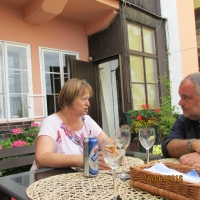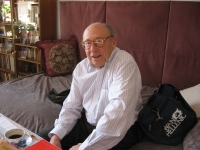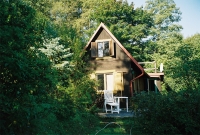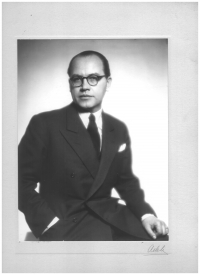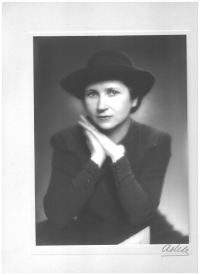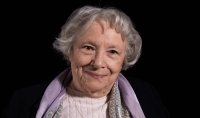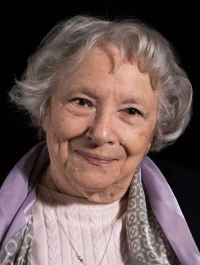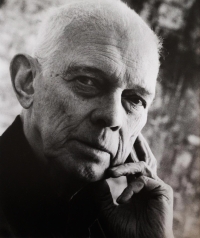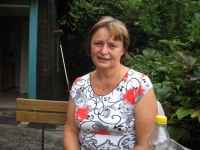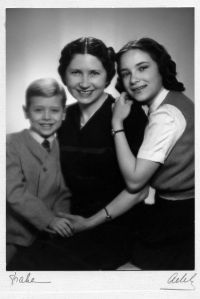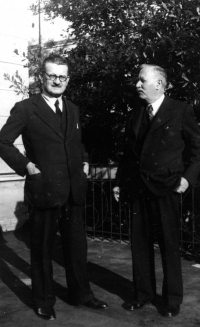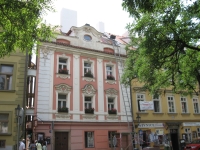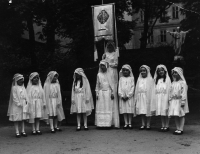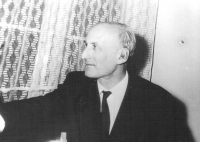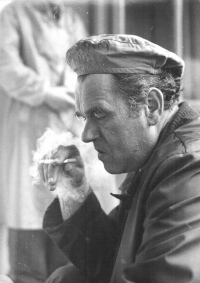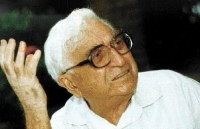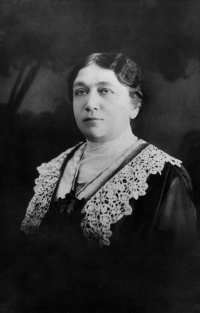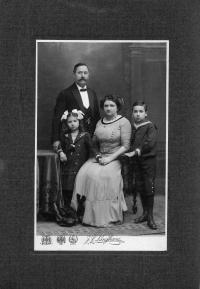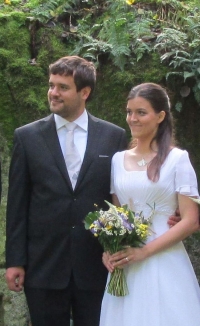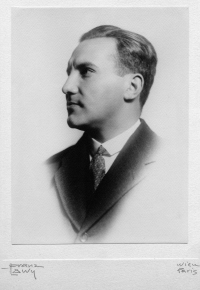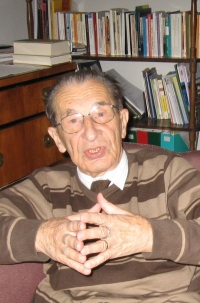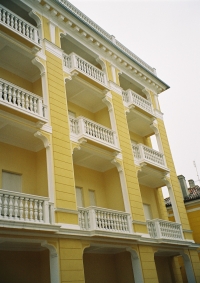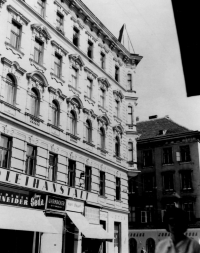MUDr. Dagmar Pohunková
* 1929
-
"There was a gypsy settlement in Předlice, and when my colleague Pelikán was not there, I stood in. I have a very nice story from there. I was working and an old gypsy man came and said, 'My daughter has died.' He moaned. I got scared. The nurse said, 'It's nothing, this is the fourth time this year.' I took a syringe in a white coat, maybe it was caffeine, with an injection, and a sister with me, and we went in a procession with the guy to his house. There was a large family gathered, a young woman lying there with a hysterical attack. I leaned over her, I did little tricks, I gave her the injection and she came to life. Which made me a great advertisement, and I was the miraculous doctor who resurrected her.”
-
"Smuggling a goose into Prague was dangerous, it was a crime. I remember once my father got a goose from one of the bank clients. No one but a child could go for it. At the age of twelve, I went to a classy law firm, got a ten kilos goose in my bag, and had to bring the goose home from Londýnská Street. It was impossible to get to the tram, there would be a check. When the little girl went with a bag, she had to walk, as if the bag was light, toss with it, to swing with it. I had to go with it from Londýnská Street to Vinohradská vodárna, up Korunní třída, and that was terrible. This is one such experience that one will not forget even after eighty years. My mother was waiting for me there and she took the bag from me. When the family got such a goose, the goose could not be roasted. The skin had to be pulled off. The lard had to be melted, the liver had to be loaded into the lard. The food from giblets had to be made separately and the meat had to last long enough to be prepared in various ways.”
-
“The apartment had a bathroom with a gas karma heater. Quite very small. Very soon after the occupation, after the Nazi occupation, after the creation of the protectorate and during the war, gas was rationed. So, hot water had to be saved a lot. We took a shower once a week. The household was furnished in such a way that, of course, there was no washing machine at the time. Personal laundry was washed by hand in the sink in the bathroom, and large laundry was taken away in the trunk by a laundress, who did it somewhere at home and brought it back ironed. There was no hot water in the kitchen. The kitchen had a gas stove on its legs and a large tiled stove as we usually have in cottages today. There was a refrigerator. I remember also the refrigerator, when they were bringing ice - ice was put into it. They arrived, and I think that it was from the Branický brewery. So, brewery horses arrived with a wagon and blocks of ice were delivered to the refrigerator. Then the refrigerator was modern, I think originally on gas. Only later there was an electric refrigerator. The stove was gas. There was a modern sideboard, it was called an American sideboard. Benches, table, chairs. And an essential part of the kitchen – “myčák”. A table with a hinged top, under which was a shallow zinc bath for dripping dishes. It had a large pull-out drawer with two galvanized tubs. Water had to be poured into it, it was poured from a tap in the wall, under which there was a sink. These are very nice, museum outpourings today. The water had to be heated on a hotplate and the warm water in the pot was transferred to the sink. As long there was a maid, it worked. When, during the war, it began to tighten and total deployment began, it was not possible to have a maid. The dishes were washed by our mother, a gentle lady with manicured hands. She washed the dishes and I wiped. And during this activity, most of the essential family conversation took place.”
-
"Well, in that Vienna... Grandma gave them the apartment on Westbahnstrasse. Grandmother Kebrdlová gave them the apartment and moved in with her daughter. She repaired the whole apartment for them, arranged it: windows, doors, parquets, everything. It was a five-room apartment because all the workshops had been closed there. It was five rooms. The Landrs ordered and bought the furniture, which was made in the factory of the Kalbáčs, of Jeník's brother-in-law. It was furniture where the bedroom was of Louis XVI, a white, dining room inlaid with several colored woods in the style of Maria Theresa. It was beautiful. Large manor room made of solid oak. A cabinet that was designed as a future children's room, and then a mahogany-furnished guest room. It was a large five-room apartment. Maňulka came there and she had the idea that the household would be managed as her mother managed the hotel. She made menus, three-course lunches. She had a maid, of course. It was either Any or Mitzi, no matter [her real name]. It was interesting that in that beautiful large apartment there was an automatically made room for a maid and it should be noted that it was the same in the Prague apartment. The maid's room had no direct window, only a barred window to the hallway. It was a narrow noodle with a metal bed, a metal stand with a metal sink and a jug, a cupboard, a chair, a table, almost like a prison cell. That's how the maids lived. In Vienna, she was not allowed to use the bathroom, and when she wanted to bathe, she had to go to the city spa. Absolutely unbelievable, although otherwise everyone had a social feeling. It was cleaned up until the war started, even later, so that every day the carpets were swept by a hard broom in a kneeling or squatting position. Then the carpet was rolled up and the parquet was polished with a flannel cloth. Once a week, it was hoovered by electrolux. Then the dust was wiped off. The carved flowers and ornaments on the furniture had to be cleaned with a brush. It was all done every day. The paintings and frames were wiped with such a fetterpusch made of cock feathers. That's what the maid did. The lords ate at a large round table in the dining room, where there was a bell from below. They rang the bell to have another course brought. And during the war, when the maid was gone, my mother and I cleaned it up like this.”
-
"Patients who applied for a disability pension had to go to their doctor first, and from there it went to the relevant commission, which wrote the reports. Some people had a red P in their top right corner of their papers. I don´t know if it meant 'political,' or what it meant, but they were people who weren't supposed to get the pension. When such a person came, it depended on the doctor making the report. And I came across some people who were in very poor health. But like former kulaks or prisoners or a former factory owner, my uncle ... and they were in very bad health. I was lucky to have a relative in Krč, in today's IKEM, associate professor Modra, where I sent these people to the council. And when they came from Prague with such a report, then the pension commission could no longer say no. So, I won their pension."
-
"We promoted the so-called painless childbirth in health education. It was a method, I don't know if it came from Soyuz... Based on exercising, preparation, breathing, childbirth can be painless. So, I went to give birth light-heartedly at the 3rd gynecology in Londýnská street in Prague. With a book, I had a manicure set with me, I went to the preparation room. And suddenly the pain came. I went to the hallway where I was stumbling and called out, 'It hurts!' Such an elderly midwife hugged me and said, 'And what do you think little girl? Of course it hurts.' I was a doctor, but stupid, completely inexperienced. The birth took place in such a way that even though I was to some extent favored, I knew the head of the clinic, I gave birth alone on a gynecological delivery table in a semi-darkened room. Tiled room. I don't know if I had an infusion, but in my hand, I had a mask attached to a Nitrous oxide bomb, I had to breathe whenever the pain came. And if I was stupefied, it would fall out of my hand. I was afraid I would dampen the baby, so I took little and it took a long time, about six hours. I was there alone, in the dark and in pain. They only came to see me and left again. Then they kind of put me to sleep. The boy, Petr, was born. He was over four kilos, measuring over fifty cm. So, he was a real humpty-dumpty. And, of course, it wasn't like what was being done today to be laid on the mother's breasts, but they took him away, packed him, and brought him in in the morning. They brought him in such a cart that they used for bringing sweet bread. Such a cart. Babies wrapped next to each other."
-
Full recordings
-
Praha, 09.03.2020
(audio)
duration: 01:39:50
-
Praha, 25.05.2020
(audio)
duration: 01:44:49
-
Praha, 02.06.2020
(audio)
duration: 01:44:26
-
Praha, 08.06.2020
(audio)
duration: 01:16:05
-
Praha, 04.08.2020
(audio)
duration: 01:33:38
Full recordings are available only for logged users.
Heal the body and take care of the soul
The doctor and Christian activist MUDr. Dagmar Pohunková was born on January 17, 1929 in Vienna in the family of the Czech jeweler Jan Kebrdle. Her father soon died and her mother remarried the Czech banker Josef Velka. After the Anschluss Österreichs (the annexation of Austria to the Nazi Germany) in 1938, the family moved to Prague, where Dagmar graduated from a secondary grammar school and then in 1948 she began studying medicine. Thanks to her father’s inheritance, she remained the co-owner of a Viennese jewelry company even after 1948. At the end of her studies, in 1953, she married Milan Pohunek and in the same year they both took up positions as doctors at the hospital in Ústí nad Labem. In 1955, they returned to Prague, where Dagmar Pohunková worked at the Research Institute of Health Education. Shortly afterwards, her son Petr was born, but she and her husband soon got divorced. After communist checks in 1958, she had to leave the Research Institute of Health Education and then worked as a general doctor in Hořovice. Since the first half of the 1960s, she was in contact with the Catholic community around the parish of Priest Jiří Reinsberg at the church of Our Lady before Týn. She took part in ecumenical dialogues at a seminar in Jircháře, interpreted theological lectures as a part of the Work of Council Restoration, and wrote a letter to Alexander Dubček in 1968, in which she demanded greater freedom for believers. From 1968 she lived again in Prague, working as an editor of the State Medical Publishing House, later renamed Avicenum. At the same time, she collaborated with Václav Vašek and helped him edit manuscripts for the Czech Catholic Charity publishing house. During the normalization period, she worked at the Institute of Endocrinology in Motol in the department of radioisotope treatment. She became one of the inspirers for founding the first hospices in our country, a number of priests (Josef Zvěřina, Oto Mádr, Antonín Bradna, Bonaventura Bouše) met in her house in Malá Strana. After 1989, she worked as the editor-in-chief of Zdravotnické noviny and was a long-time chairwoman of the Ethics Committee of the Ministry of Health. She is the co-author of many Christian publications (eg Naše sestra Anežka, with Maria Kyralová), and participated in others as a translator or editor.
